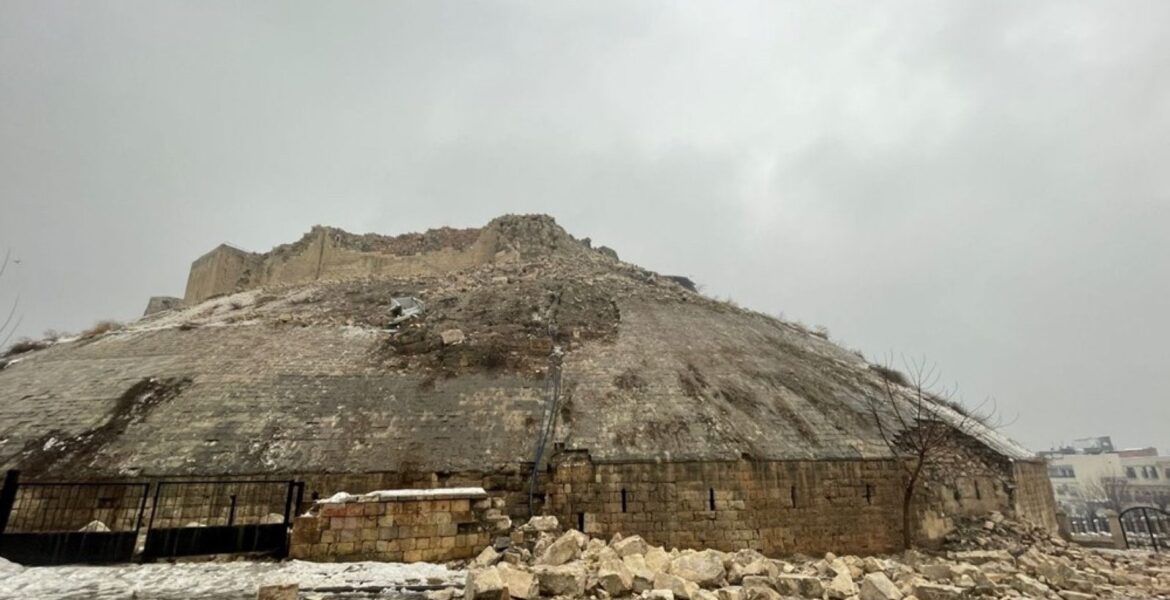Turkey and Syria experiencing a nightmare situation after the deadly 7.7 Richter earthquake which, in addition to over 1,000 human lives lost, has destroyed thousands of buildings - among them the 2,200-year-old Gaziantep Castle, a UNESCO World Heritage Site that was severely damaged.
“Some of the bastions in the east, south and southeast parts of the historical Gaziantep Castle in the central Şahinbey district were destroyed by the earthquake, the debris was scattered on the road,” Turkish state-run news agency Anadolu reported.
“The iron railings around the castle were scattered on the surrounding sidewalks. The retaining wall next to the castle also collapsed. In some bastions, large cracks were observed,” the report added.
2,200 years old Gazintap Castle destroyed by the earthquake in Turkey.
Before vs Now. pic.twitter.com/vAtIWhmlsA
— Xavi Ruiz (@xruiztru) February 6, 2023
The dome and eastern wall of the historic Şirvani Mosque, which is located next to the castle and is said to have been built in the 17th century , also partially collapsed, the same media added.
❗🇹🇷 The Gaziantep Castle, which was built more than 2,200 years ago, collapsed during the earthquake.#Turkey #TurkeyEarthquake #earthquake #BreakingNews #deprem #Syria pic.twitter.com/PtCVgCqA3Y
— The News Spark (@TheNewsSpark) February 6, 2023
According to the archaeological excavations, the castle was first built as an observation post during the Roman period in the 2nd-4th century AD . and expanded over time.
Parts of historical castle in Gaziantep level in earthquakehttps://t.co/8wiAlvV3JY pic.twitter.com/ZOOjb29lBD
— Hürriyet Daily News (@HDNER) February 6, 2023
It took its current form between 527-565 AD. during the period of the Byzantine emperor Justinian I, according to Turkish Museums, the official website of the country's museums and archaeological sites.
Watch video: Earthquake in Turkey: 2,200-year-old castle collapsed - Watch video of the wreckage
It took its current form during the reign of Byzantine Emperor Justinian (527-565 C.E.), according to Turkish Museums, the official site of museums and archaeological sites in the country.
Most recently, it served as the Gaziantep Defense and Heroism Panoramic Museum.
Responding to reports of a 7.5 magnitude aftershock following the first quake in southern Turkey this morning, CNN’s meteorologist and severe weather expert Chad Myers explained why the aftershocks have been so severe.
The 7.5 aftershock was “an earthquake in itself,” Myers told CNN's This Morning. “It would have been the strongest earthquake since 1999 in the region.”
We always talk about the epicentre, but in this case we should talk about the epi-line.
Two massive tectonic plates – the Arabian and the Eurasian – meet underneath Turkey’s southeastern provinces. Along this fault line, “about 100 miles from one side to the other, the earth slipped,” said Myers.
Seismologists refer to this event as a “strike slip” – “where the plates are touching, and all of a sudden they slide sideways,” said Myers.
This is unlike the Ring of Fire, which runs along the west coast of the United States. In this zone, earthquakes and tsunamis are often caused by subduction – where one plate slides below another.
But in a “strike slip,” the plates move horizontally, rather than vertically.
“Why that matters is because the buildings don’t want to go back and forth. And then the secondary waves begin to go back and forth as well,” said Myers.
Because of the nature of this seismic event, aftershocks could last "for weeks and months," according to CNN meteorologist Karen Maginnis.
At least 1,504 people have been killed in Turkey and Syria, and thousands more injured, after a powerful 7.8 magnitude earthquake rocked southern Turkey early Monday.
In Syria, a total of at least 592 people have died, including 371 mostly in the regions of Aleppo, Hama, Latakia and Tartus, according to Syrian state news agency SANA, which also reported 1,089 injuries.
In Turkey, at least 912 people have died and 5,385 people were injured, Turkey's President Recep Tayyip Erdoğan said in a televised address Monday.
Rescuers are working through the rubble of collapsed buildings to locate survivors, while NATO, the EU and 45 countries have offered assistance following the disaster.
A CNN eyewitness said aftershocks were still being felt hours after the earthquake.
READ MORE: President Sakellaropoulou helps feed the homeless in Piraeus - See the photos.


